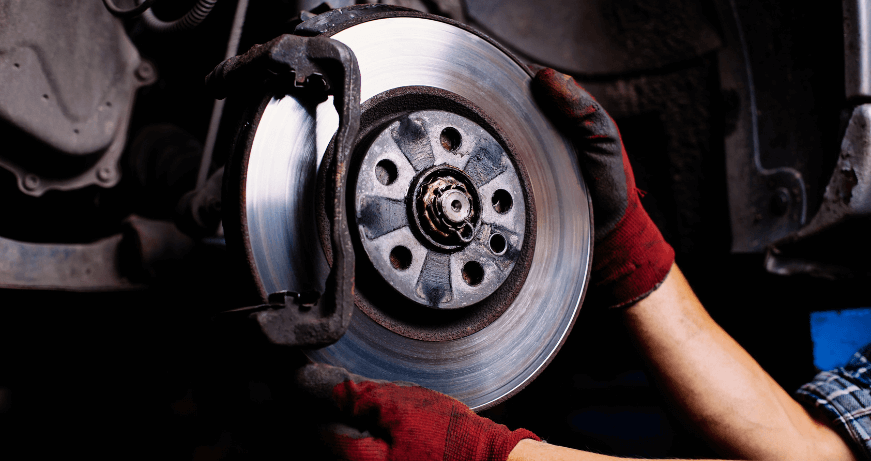When searching for “safety features for commercial vehicles,” you’re looking for more than just a theoretical overview. You want to know which systems are reliable on the road, in traffic, under heavy loads, and ideally, how to inspect or test them yourself. One of the most essential, yet underestimated, safety systems in trucks and other large commercial vehicles is the air brake system.
In this article, we’ll identify key safety features for commercial vehicles, focus on why air brakes are a cornerstone, and offer helpful considerations for maintaining your braking system.
Why Safety Features Matter in Commercial Vehicles?
Commercial vehicles present higher risks: greater mass, longer braking distances, and an increased risk of catastrophic accidents. The failure or degradation of a component can cause a major safety issue.
Key safety features of commercial vehicles typically include:
- Anti-lock Braking System (ABS)
- Electronic Stability Control (ESC)
- Retarders / Engine Braking
- Trailer Sway Control
- Collision Avoidance / Automatic Emergency Braking (AEB)
- Air Brake System (for heavy vehicles)
Each of these systems addresses a specific risk: wheel lock, rollover, excessive speed downhill, trailer instability, collision avoidance, or basic braking. But among all these systems, air brakes are essential for vehicles and buses: in the event of a failure, no advanced system can fully compensate.
What Are Air Brakes?
Unlike hydraulic braking systems used in passenger cars, air brakes use compressed air to operate the braking mechanism.
Here is a simplified breakdown:
- An air compressor (driven by the engine) pressurizes the air and stores it in tanks.
- When the driver presses the brake pedal (or pedal valve), air flows from the reservoir through the valves and lines to the brake chambers.
- The chamber pushes a diaphragm or mechanical linkage, applying the brake by either pressing the brake shoes against a drum or the brake pads against a disc/rotor.
- Releasing the pedal vents air out, releasing the brakes.
- A “spring brake” / parking brake is engaged by springs when air pressure is released — a “fail-safe” measure.
Because compressed air can be stored and the system is designed with several safety features, air brakes are generally safer and more reliable for commercial vehicles than conventional hydraulic systems.
Key Safety Characteristics of Air Brake Systems
To understand why air brakes are so reliable in commercial vehicles, consider these safety features inherent in or often included in good air brake systems.
Dual/Redundant Air Circuits
Many vehicles use dual or redundant air circuits. A dual air brake system divides the braking system into two independent circuits: a primary circuit and a secondary circuit. If one circuit fails, the other still provides the braking power needed to bring the vehicle to a safe stop.
Fail-safe spring brakes
If the air pressure drops below an acceptable level (for example, due to a leak or compressor failure), the spring brakes automatically engage using high-tension springs. In other words, air loss = brakes on. This default safety system prevents vehicles from spinning out of control.
Low Pressure Warning & Alarms
Air brake systems must be equipped with a warning device (light, horn, or “mechanical signal”) that alerts the driver when the air pressure has fallen below a critical level (usually 55 to 75 psi).
Relay Valves & Quick Response
Due to the distance the air travels in the lines to reach the rear brakes, some lag (brake lag) can occur. This problem can be solved with relay valves, located closer to the rear brakes, which speed up the response by controlling the airflow nearby.
Integration with ABS & Electronic Systems
Modern commercial vehicles frequently use air brakes, in addition to ABS, ESC, and even collision avoidance systems. These systems help regulate braking force at each wheel, eliminate wheel lockup, and promote stability—all of which depend on a good air brake system.
Why are air brakes important?
- Increased reliability under load — Hydraulic systems are prone to leaks, fluid loss, or vaporization due to heat. Air is everywhere, and even in the event of a leak, the system is designed to alert and activate safety devices.
- Safety Behavior — If the system loses air pressure, the spring brakes automatically engage.
- Better maneuverability under stress — Thanks to redundancy and features such as relay valves, the system maintains its functionality in difficult scenarios.
- Compatibility with advanced safety technologies — ABS, ESC, and AEB systems overlap, but they require a reliable pneumatic system.
- Regulatory compliance and standards — Many jurisdictions require air brake systems (or at least certain levels of performance) for commercial vehicles.
Conclusion
For fleet managers, commercial vehicle drivers, or fleet specifiers, understanding air brakes and their maintenance is essential for safety, compliance, and peace of mind. The air brake system isn’t just an accessory: it’s a fundamental pillar of safety that supports all the other sophisticated systems in your truck.
Don’t wait for a breakdown to occur: integrate inspections, maintenance, training, and performance measurements into your routine.
Contact Qingling UAE today!
Visit Qingling UAE today to discover high-performance and safe commercial vehicles and expert support. Let’s keep your fleet safe, mile after mile.

